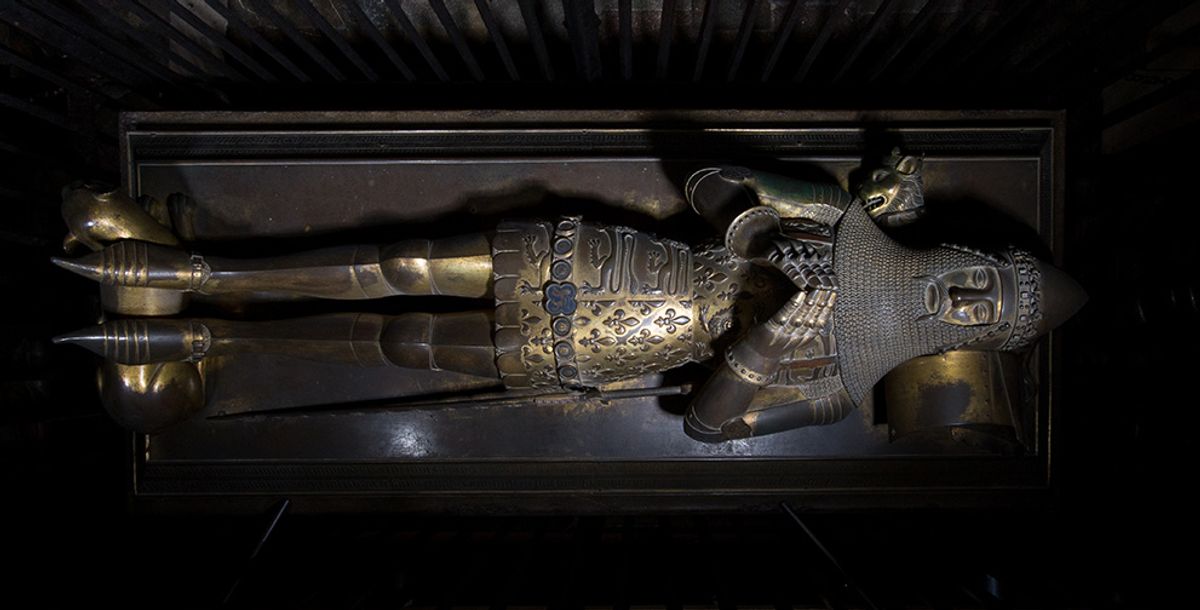More than 600 years after the death of the Black Prince, scientists have for the first time peered inside his magnificent tomb effigy in Canterbury Cathedral, revealing for the first time construction details of a masterpiece of English medieval metalwork, including armour as accurately recreated as the dead man’s real battle armour originally hung over and still displayed by his tomb.
Edward the Black Prince, son of Edward III and father of Richard II, was either a war hero or a war criminal in the Hundred Years War between England and France, depending on the sources. His nickname may have come from the armour so superbly detailed in the effigy—or from the accounts of a massacre of civilians after the siege of Limoges in 1370: the contemporary historian Froissart says that 3,000 men, women and children were slaughtered by Edward in “a violent passion”, though other historians dispute the figure.
He died not on the battlefield, but of dysentery at Westminster on 8 June 1376, dictating detailed instructions for his tomb from his death bed—and the study reveals for the first time how closely his order that he should be depicted “fully armed in plate of war” was obeyed. It is so accurate that the team now believes a real armourer helped make the effigy.
The team of art historians and scientists led by Jessica Barker, a senior lecturer in Medieval Art at The Courtauld Institute of Art, working with Canterbury cathedral, carried out the study without compromising any original material. They slid an endoscope, a narrow flexible tube with a light and camera usually used in medicine, through one of the original small openings, revealing that it was cast in sections, invisible from the outside, held together by an intricate system of bolts and pins. The details of the exterior were studied with a hand held portable X-ray fluorescence spectrometer.
Barker described it as “a completely unique and innovative figure”, which demonstrated the technological sophistication of the medieval period, and ranked the effigy as one of the UK’s most precious surviving sculptures.
“There is something deeply affecting about the way his armour is depicted on the tomb,” she says. “ This isn’t just any armour— it is his armour, the same armour that hangs empty above the tomb, replicated with complete fidelity even down to tiny details like the position of rivets.”
The study also re-dates the effigy to a decade after Edward’s death, suggesting that although Richard II faithfully followed his father’s instructions, it did not happen immediately. The team suggests that Richard then commissioned two effigies, very closely related stylistically, the Canterbury tomb and the effigy of his grandfather Edward III in Westminster Abbey, bolstering the image of his own royal line. Both were revolutionary works of art after centuries in which tomb effigies were carved in stone or wood, or represented one dimensionally in metal.
The study is published in the latest edition of the Burlington Magazine.


